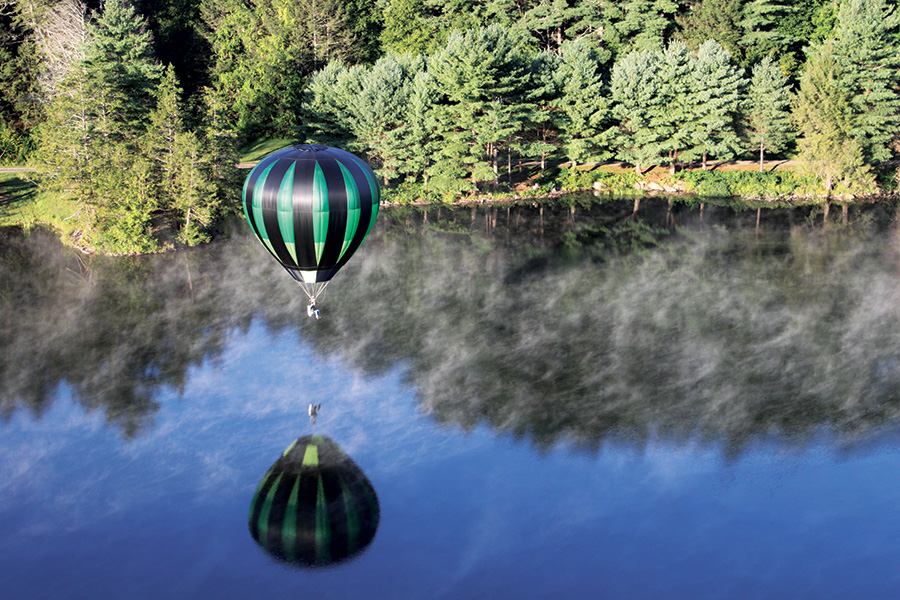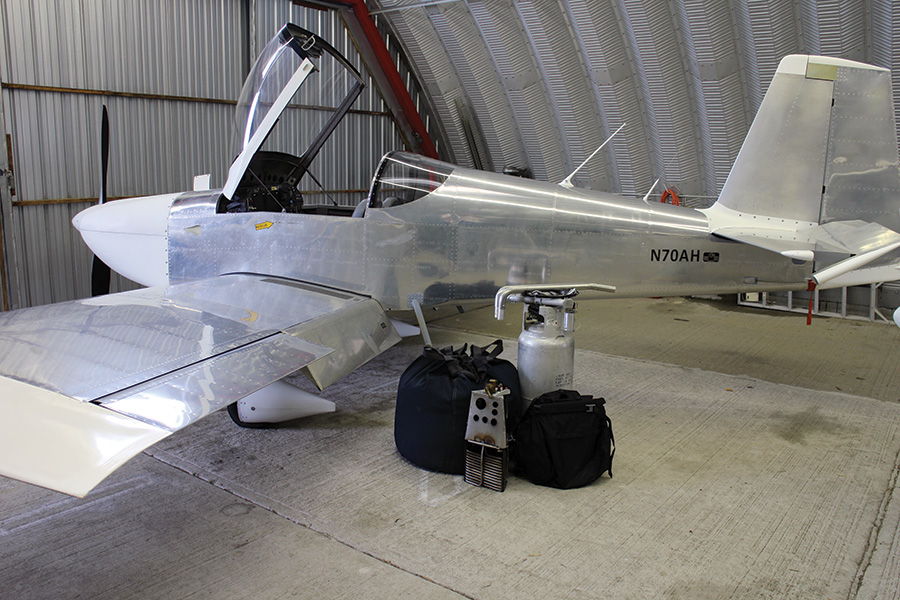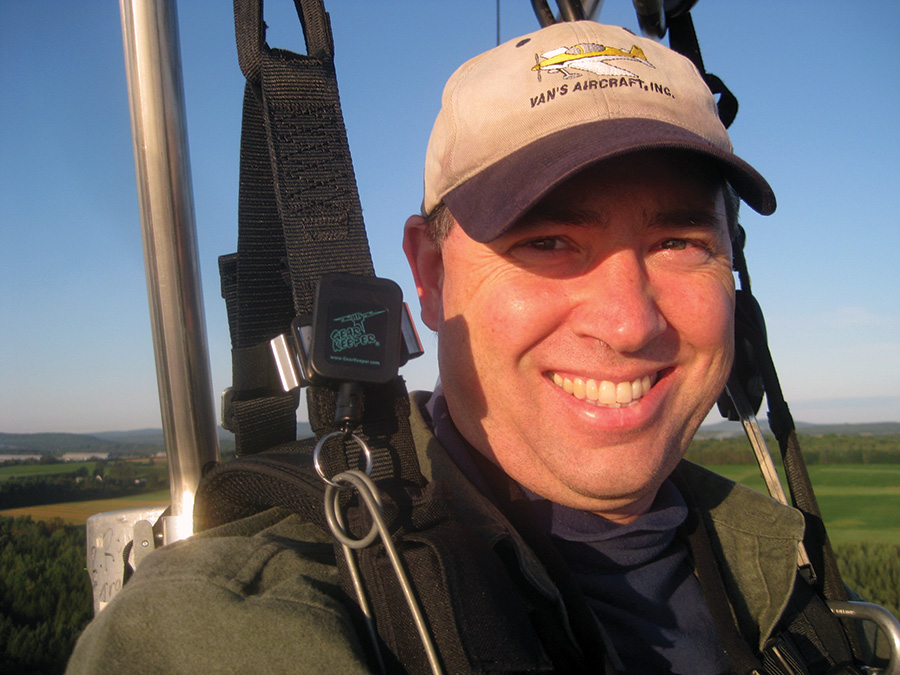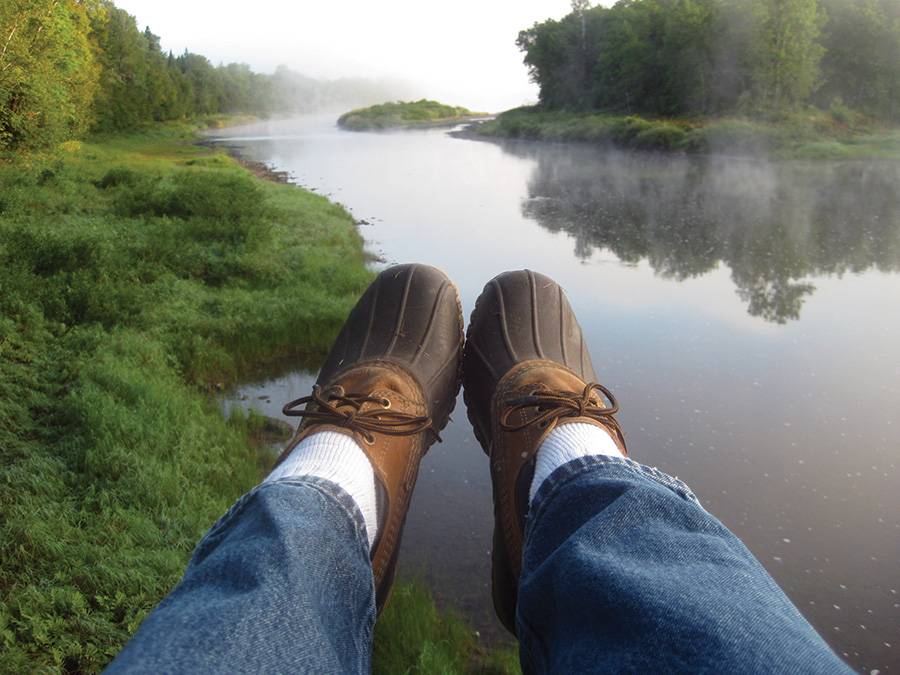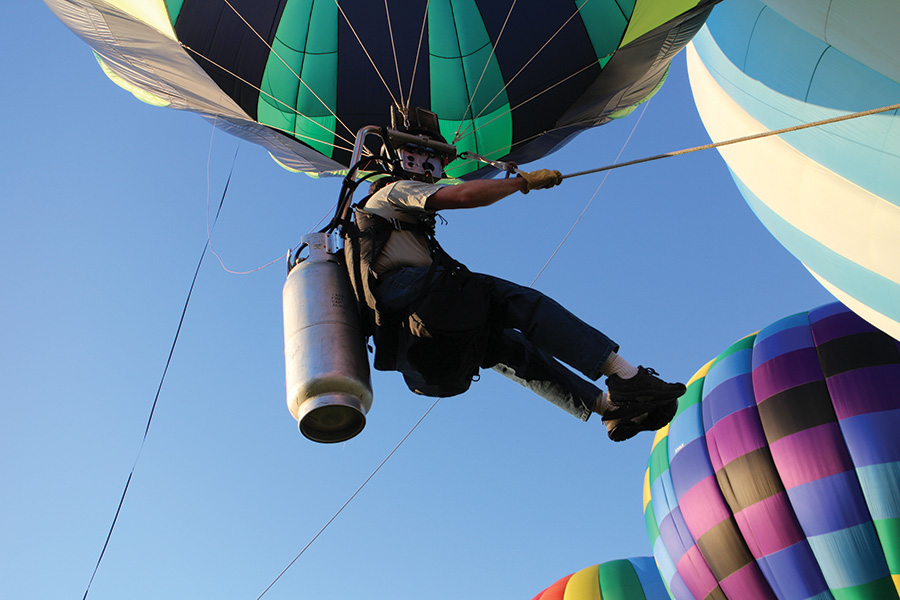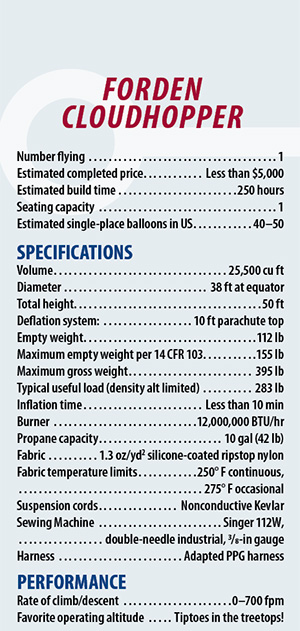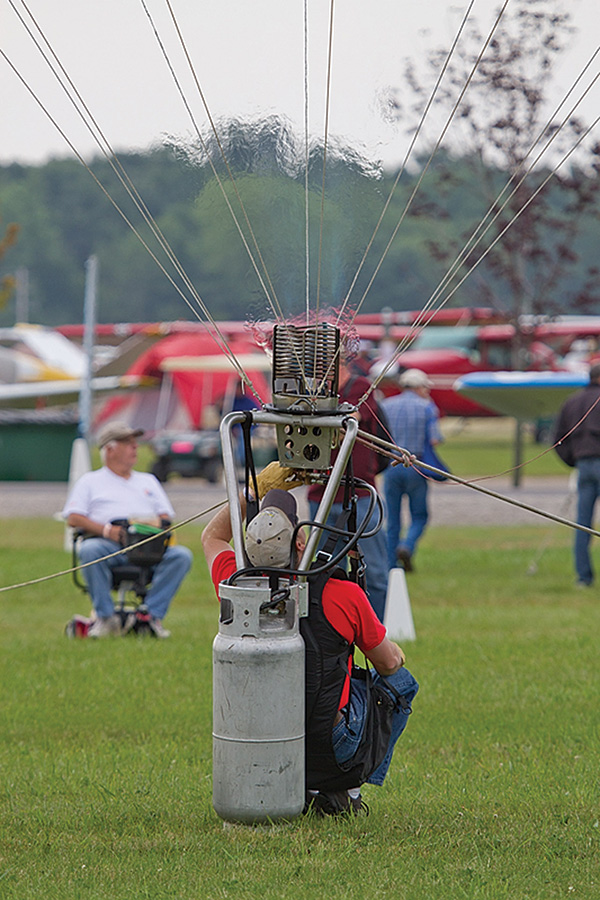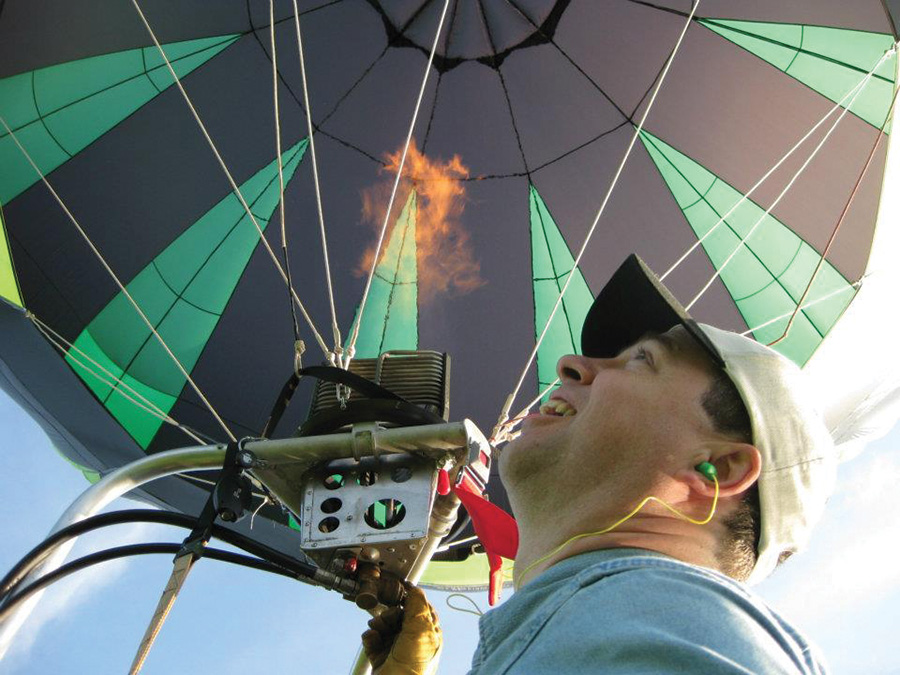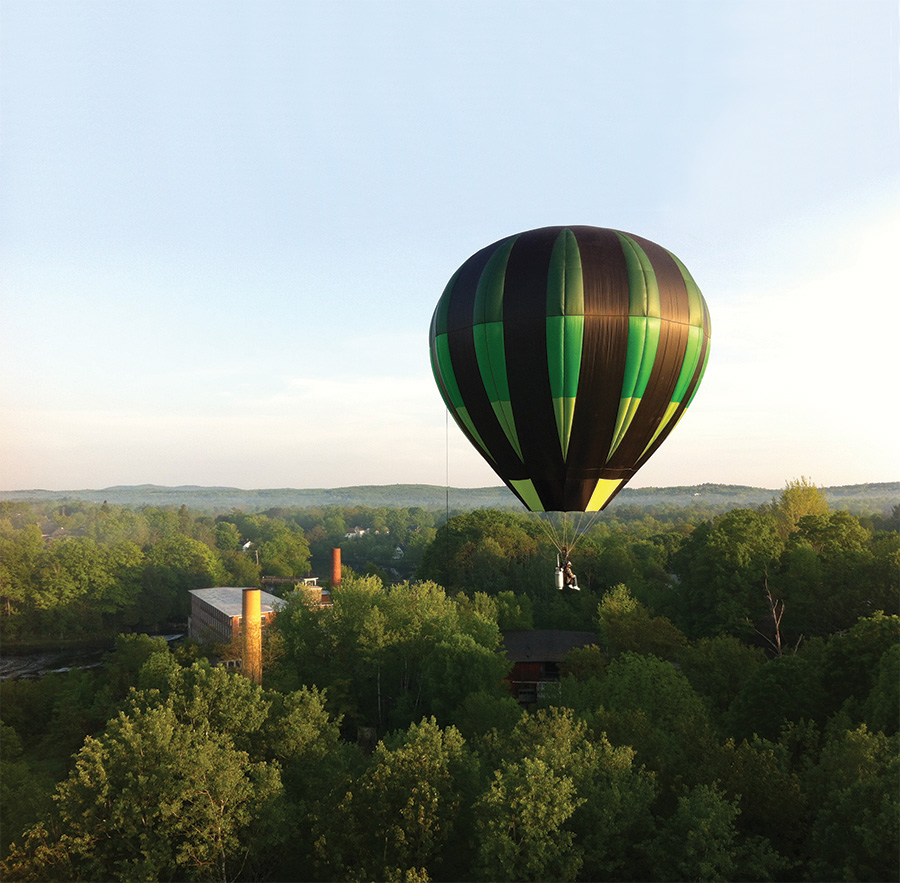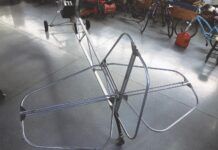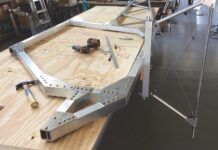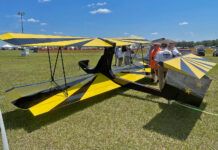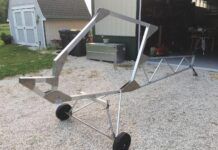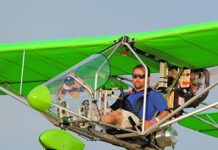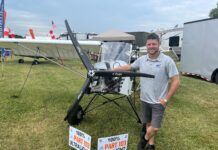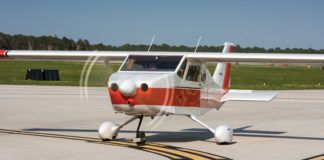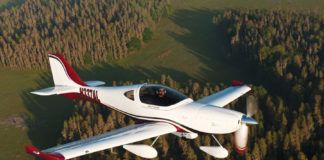Empty Nest Syndrome: A feeling of grief and loneliness parents feel when their children leave home for the first time. After the first flight of my RV-7A in October 2011, I started to feel a bit of empty nest syndrome myself. No parts lying around my workshop that needed deburring, no rivets to set, no epoxy to mix, no wires to run. Sigh…I decided I needed a new project. Nothing that would take years, mind you, I definitely did not have the stomach for that, and with a honey-do list that had been neglected for years, I had to tread lightly with my wife, who was more than patient and accommodating throughout the build. I thought it would be fun to build a single-place, ultralight hot-air balloon, which would fit in my new RV-7A.
The author’s ultralight hot-air balloon was designed to fit in the baggage compartment of his RV-7A.
Building a Balloon
I’ve been building and flying hot-air balloons for 25+ years, having developed and built radio-controlled scale-model hot-air balloons in college, which led to a job in a balloon repair station doing inspections and repairs. After getting my degree in aero/mechanical engineering, my first job was working as an engineer for a balloon manufacturer designing, testing, and working FAA certification of manned balloons, so this project was right in my wheelhouse.
My RV is called The Time Machine because it takes me places in a couple of hours that would otherwise consume eight hours to drive, and it allows me to go somewhere for the weekend that I would need a three- or four-day extended weekend without the RV. There are balloon events that are many hours away that I couldn’t consider attending because of the additional vacation time they would require me to take, but being able to get there after work on a Friday night and home again Sunday in the RV can make a big difference.
I had built a single-place hot-air balloon (called a “Cloudhopper” in ballooning parlance) just prior to starting the RV, but it was too large to fit in the airplane, although parts of it could be used in this new system, including the envelope, or fabric portion, and the propane burner assembly. The “bottom end” would, for the most part, be new and very minimalistic with no basket-just a harness-so it would fit in the airplane. We all know that aircraft are a series of compromises, and this is no different, especially with the size and weight constraints that the RV’s baggage compartment imposes. Unfortunately, I cannot take a passenger when hauling this system unless I borrow a specialized balloon fuel tank when I arrive at my destination. Incidentally, I always fly with the fuel cylinder empty (strapped securely into the right seat), mostly because it is much easier to load and unload when empty, and I don’t want to risk damaging the airplane loading a heavy, ungainly propane fuel cylinder.
First Flights
After doing a test fit of the newly completed system in the plane, it was time for the first test flight, and it was great fun-after a bit of initial stress. It was very strange to fly without a basket for the very first time, to have your legs dangling down into space, and to have no protection between you and the hard, sharp earth. Mind you, I had sat in the harness for several hours suspended from the ceiling in my shop, checking that I could maneuver and reach the fuel valves and controls as needed. But as I cleared the treetops for the first time, I had a feeling I had not experienced since my very first balloon flight 25 years before-a feeling of what the hell have you done! I was holding on so hard, I swear my fingerprints are still visible, imprinted into the stainless steel structure supporting the fuel cylinder. After just a couple of minutes though, I was able to relax. From then on I was, and have been, completely comfortable.
This tiny aircraft affords a great feeling of freedom being suspended in the middle of the atmosphere, with nothing between you and the ether, not a breath of wind since you are moving along with it, and complete silence (at least when the burner is not blasting). It does, however, require you to be particular about the winds even more so than you need to with a basket-equipped balloon that affords you significant protection during a landing in high winds.
After everything tested out fine during the shakedown flights at home, I decided to take both new craft to a small balloon event way up in northern Maine at Presque Isle, next to the Canadian border. It’s a full day’s car ride away, but I left work in Rhode Island on a Friday afternoon at 1:15, drove to my hangar, and after a beautiful flight past Mt. Washington and Mt. Katahdin, the start of the Appalachian Trail, I was in Presque Isle by 4:15 and lifting off in my homebuilt Cloudhopper at 5:30, having achieved a longtime dream. What a great day!
Flying to EAA AirVenture in Oshkosh with my homebuilt balloon in the Van’s RV-7A that I also built was a “pinch-me” moment!
AirVenture Adventure
Thus far, I have taken my Cloudhopper to several balloon events in Maine, Connecticut, and Wisconsin. During AirVenture, I tethered it several times in front of the ultralight barn. The looks I got from the spectators at AirVenture were great, and invariably consisted of one of two possibilities: First, “Dude, you are completely crazy!” or second, “That looks so cool-I want one!” Unfortunately, the one day designated for balloon free-flights from OSH dawned with winds taking us over Lake Winnebago (but not enough to get completely across) so we were only able to tether.
That night, I loaded all my gear into the RV and flew over to Idlewild Airport, 30 miles west of OSH in the small town of Wild Rose, and camped out, waking to do a free-flight with several other balloonists-which was great fun. After brunch with my new-found ballooning friends, I loaded the balloon and all of my camping gear back into The Time Machine and launched before noon, making the 800-mile flight home to Rhode Island and arriving home in time for dinner.
Cloudhopper Details
The balloon features a unique, custom swivel assembly with cam-follower roller bearings that allows the pilot, harness, burner, and fuel cylinder to rotate (in azimuth) independently from the balloon envelope, so you can still see where you are going if the balloon envelope rotates in flight, which it frequently does. During high wind landings, you touch down backwards, so that the tank takes the brunt of the impact and protects you.
The whole system weighs 112 pounds and carries 10 gallons of propane (the very same fuel used in your gas grill), enough for about a 75-minute flight. The envelope, or fabric portion, weighs about 55 pounds and holds 25,500 cubic feet of air at around 225 F. The envelope is 38 feet in diameter, and the whole rig is about 50 feet tall when inflated. The envelope is constructed from lightweight, silicone-coated ripstop nylon and lightweight nylon webbing, and was sewn on an old double-needle Singer sewing machine built in the 1940s. Kevlar suspension cords connect the envelope to the bottom end to save weight-larger balloons often use stainless aircraft cable. The harness was adapted from a unit made for paramotoring, and inflation takes about 10 minutes. Balloons are inflated cold, usually with a small gasoline-powered inflation fan, but even my little fan will not fit into the plane without disassembly.
I usually borrow an inflation fan on arrival, but one of these days, I’d like to use the RV’s 74-inch “inflator fan” to inflate the balloon prior to heating the air and making it buoyant, which only takes 15-20 seconds.
It is helpful to have at least one crew-person to assist with the inflation and to drive a chase vehicle to pick you up wherever you might land. Balloons almost never land where they launch from-they simply fly with the wind and land when they get low on fuel or the surface winds increase. There have been a couple of flights I have done with no chase vehicle; I just landed near other balloons to hitch a ride back to the launch site. I have been as high as 4,000 feet agl with this balloon, and the service ceiling is up around 15,000 msl (on a cold day). The total cost to build this balloon system was under $5,000.
FAA Regulations
The design and operation of ultralight vehicles in the USA is covered by 14 CFR Part 103. In general, ultralights are limited to only five gallons of fuel, but hot-air balloons are an exception-there is no limit to the amount of fuel that can be carried, as long as your empty weight stays below 155 pounds. (See FAA Advisory Circular 103-7.) No pilot certificate is required to fly it, since it is an ultralight, and no airworthiness inspection or certification is required, so there is no registration number. This is a real freedom we have in the U.S. to build and fly our own aircraft without any type of certification or inspection, so prudence requires obtaining help from somebody knowledgeable, if one gets in over their head.
For more information, there is a gathering of Experimental lighter-than-air builders and enthusiasts late summer in Connecticut at XLTA. I call this “The Oshkosh of Ballooning.” You can find more info at www.xlta.org. Paul Stumpf of Stumpf Balloons is another good resource. He has been making homebuilt balloons for over 35 years. His web site is here.

